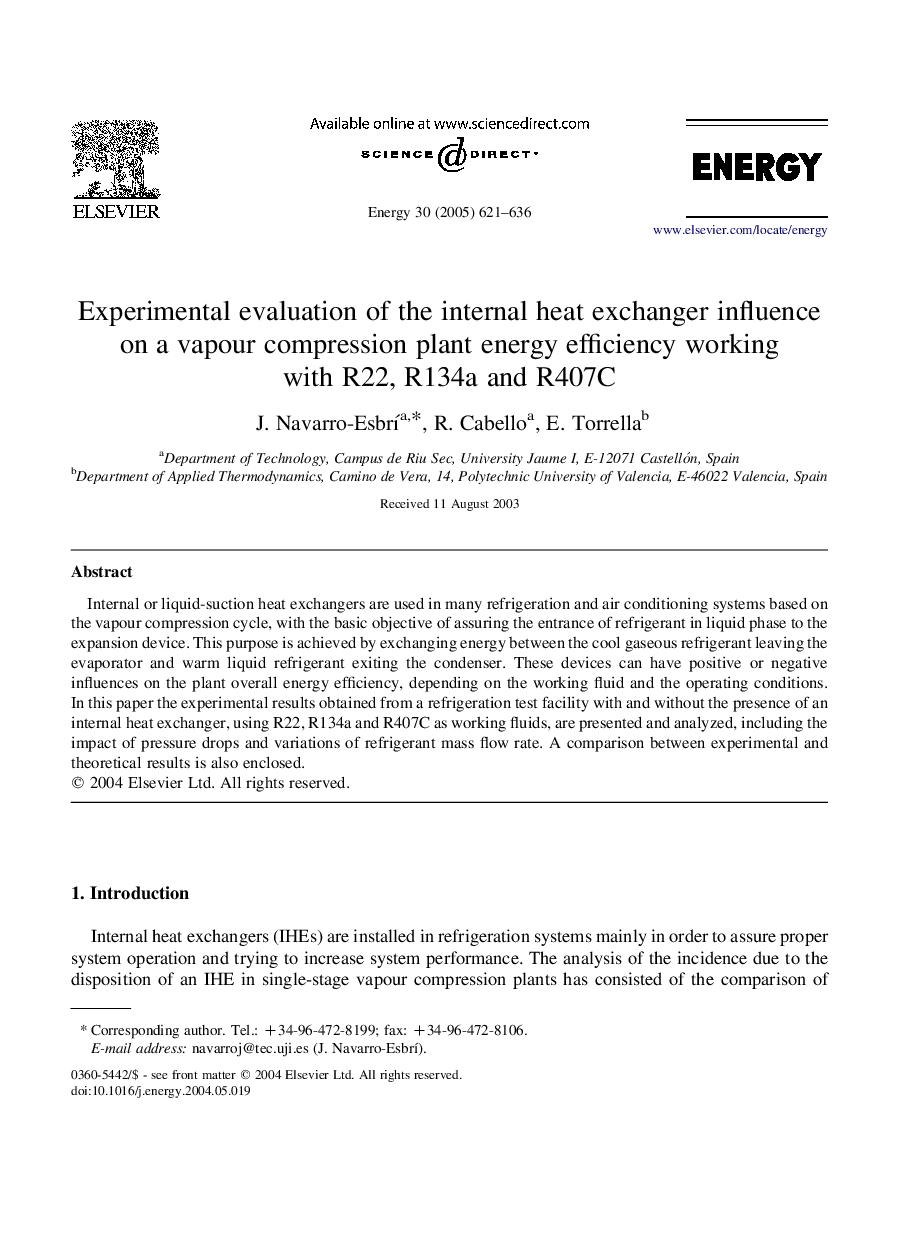| Article ID | Journal | Published Year | Pages | File Type |
|---|---|---|---|---|
| 10682950 | Energy | 2005 | 16 Pages |
Abstract
Internal or liquid-suction heat exchangers are used in many refrigeration and air conditioning systems based on the vapour compression cycle, with the basic objective of assuring the entrance of refrigerant in liquid phase to the expansion device. This purpose is achieved by exchanging energy between the cool gaseous refrigerant leaving the evaporator and warm liquid refrigerant exiting the condenser. These devices can have positive or negative influences on the plant overall energy efficiency, depending on the working fluid and the operating conditions. In this paper the experimental results obtained from a refrigeration test facility with and without the presence of an internal heat exchanger, using R22, R134a and R407C as working fluids, are presented and analyzed, including the impact of pressure drops and variations of refrigerant mass flow rate. A comparison between experimental and theoretical results is also enclosed.
Related Topics
Physical Sciences and Engineering
Energy
Energy (General)
Authors
J. Navarro-EsbrÃ, R. Cabello, E. Torrella,
